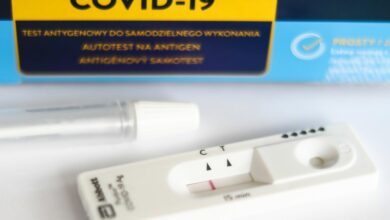NIH ends role in Safe to Sleep campaign to prevent infants deaths

The decision to cancel federal participation in the Safe to Sleep campaign has raised concerns among experts and organizations working to prevent infant deaths. The Trump administration’s move to eliminate the National Institutes of Health’s role in the program has come at a time when sleep-related deaths among infants are on the rise.
According to a recent study published in JAMA Pediatrics, sudden infant death rates have increased by nearly 12% between 2020 and 2022. This alarming trend has sparked outrage and disappointment among those who have been involved in the Safe to Sleep campaign for many years.
Alison Jacobson, the CEO of First Candle, a nonprofit organization that collaborated with the federal government on Safe to Sleep, expressed her devastation over the decision. She emphasized the importance of the program in reducing sudden unexpected infant deaths and highlighted the need for continued education and awareness efforts.
The elimination of the communications office responsible for running Safe to Sleep has effectively ended the NICHD’s involvement in the campaign. Former deputy director Christina Stile revealed that the entire communications office was placed on administrative leave, signaling the halt of NICHD’s support for Safe to Sleep.
Diana W. Bianchi, the former director of the NICHD, was among the institute directors who were placed on administrative leave. The lack of clarity and communication from the NIH leadership has left many stakeholders in the dark about the future of the program.
In response to inquiries about the decision, acting director Alison Cernich stated that the NICHD has always been committed to ensuring the wellness and safety of infants. However, the structural changes within the NIH have led to uncertainty about the continuation of critical programs like Safe to Sleep.
The NICHD’s role in the campaign involved distributing materials about safe sleep practices to healthcare professionals and organizations. By following recommendations from the American Academy of Pediatrics, the NICHD provided valuable resources and guidance to promote safe sleeping environments for infants.
Despite the setback caused by the federal government’s withdrawal from the program, organizations like First Candle are determined to carry on the mission of Safe to Sleep. Jacobson affirmed that they would continue their efforts to educate families and caregivers on safe sleep practices, even without the government’s leadership.
The Safe to Sleep campaign, formerly known as Back to Sleep, was instrumental in raising awareness about SIDS and reducing infant deaths in the past. By expanding the focus to include a broader range of unexpected infant deaths under the name Safe to Sleep, the campaign aimed to promote general safe sleeping practices for infants.
However, with the recent increase in sleep-related infant deaths, the need for continued education and advocacy has never been more critical. The decision to cancel federal participation in Safe to Sleep has left many wondering about the future of infant safety initiatives and the impact it will have on vulnerable populations. According to the Centers for Disease Control and Prevention (CDC), there has been a concerning increase in cases of Sudden Unexpected Infant Death (SUID) from 2020 to 2022. Specifically, there has been a 12% rise in SUID cases during this time period. Among the various causes of SUID, accidental suffocation and strangulation in bed, a type of infant death within the SUID category, has been on the rise since 1995.
This alarming trend highlights the importance of safe sleep practices for infants to prevent such tragic incidents from occurring. The CDC emphasizes the need for parents and caregivers to create a safe sleep environment for babies to reduce the risk of accidental suffocation and strangulation in bed.
One of the key factors in preventing accidental suffocation and strangulation in bed is ensuring that infants are placed on their backs to sleep. This simple practice has been proven to significantly reduce the risk of SUID, including cases of accidental suffocation and strangulation. Additionally, it is important to keep the infant’s sleep area free of any loose bedding, pillows, or soft toys that could pose a suffocation hazard.
It is also recommended to use a firm and flat sleep surface, such as a crib or bassinet, that meets current safety standards. Avoiding co-sleeping with the infant and ensuring that they are not overheated during sleep are other important measures to reduce the risk of accidental suffocation and strangulation.
By following these safe sleep guidelines and being vigilant about creating a safe sleep environment for infants, parents and caregivers can help protect their little ones from the devastating consequences of SUID. It is crucial to stay informed about the latest recommendations for safe sleep practices and to prioritize the well-being and safety of infants at all times.
In conclusion, the increase in cases of accidental suffocation and strangulation in bed within the SUID category underscores the importance of promoting safe sleep practices for infants. By taking proactive steps to create a safe sleep environment and following recommended guidelines, parents and caregivers can help prevent these tragic incidents and protect the lives of their precious babies.





